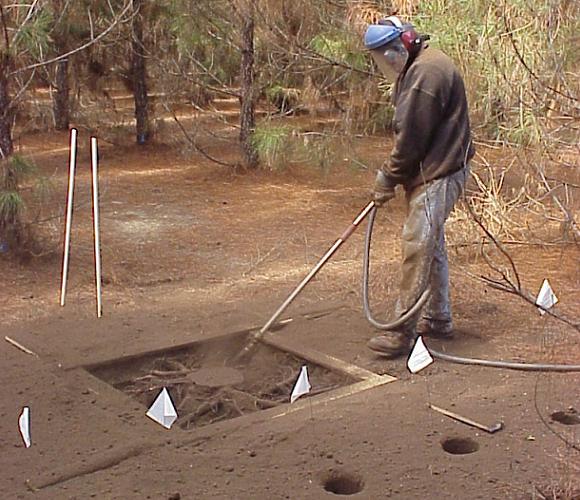BAUANA FORESTRY

The Kyoto Protocol, signed in 1997 with the purpose of creating incentives to control and mitigate carbon emissions throughout the world, was fairly successful in its core objectives. Unfortunately though, it wasn’t properly designed to handle forest devastation and degradation, responsible for high CO2 emissions in developing countries.
In September 2008, the United Nations launched the UN-REDD Programme (the United Nations Collaborative Programme on Reducing Emissions from Deforestation and Forest Degradation in Developing Countries). It was specifically designed to create incentives for forest preservation, including reforestation and provisions for social benefits. Participating countries receive funds directly from the UN-REDD Programme.
In order to participate, countries have to create and follow their own set of rules and regulations, in compliance with local laws and realities, called REDD+. The UN-REDD Programme assists developing countries in preparing and implementing national REDD+ strategies.
REDD+ helps mitigate climate change funding projects that guarantee forest preservation, as well as social and environmental benefits. It focuses on the following essential components: creating incentives for not clearing standing forests, maintaining and expanding forest cover, sustainably managing forest and recovering degraded lands.
Right now, Brazil in preparing its own national REDD+, which will soon open a new source of funds for preservation and reforestation projects. Funds are already available, though, through the World Bank’s Amazon Fund, handled by BNDES, and by the Voluntary Carbon Credits market.
Well developed and managed, forestry activities are already environmentally correct and profitable. By adding Carbon Credits, as well as Amazon Fund and REDD+ resources, they become even more attractive. With the mandatory addition of many social benefits as a bonus. A win, win, win proposition.
The Bauana Project sits on lands partially degraded by illegal logging activities throughout the years. It needs reforestation of those areas and a comprehensive preservation project to protect its whole extension from future degradation.

The 3 Parts Of The Bauana Forestry

1. Stopping Forest Destruction
This is the Preservation branch of the Bauana Forestry project, to be implemented in roughly estimated 70,000 hectares of the area. It aims at avoiding possible future degradation by implementing and managing appropriate forestry measures.
Even though national REDD+ strategies are not yet ready, this Preservation activity is an immediate candidate for Carbon Credits, issued through VCS (Voluntary Carbon Standard) certification.
How does it work?
A project demonstrating degradation and “additionality” (the possibility for degradation to continue if nothing is done to avoid it), and detailing all the measures to be implemented and followed to successfully stop forest destruction, has to be submitted for approval of VCS certified offsets.
Once approved, the Preservation project will be entitled to a certain amount of certified Carbon Credits, issued annually upon inspection of compliance. The first inspection is usually 5 years after certification.
According to preliminary rough calculations by the Carbonfund.org Foundation, Inc., made specifically for our preservation project, the amount of Carbon Credits (after deductions of risk assessment, leakage and buffer) issued directly to the Project will be between 2,300,000 and 6,500,000 tonnes of CO2 (1 Carbon Credit = 1 tonne of CO2), over a period of 30 years.

2. Using Forest Sustainably
An important concept embedded in the UN-REDD framework is forest sustainability. Value may be extracted from preserved forests, creating sustainability with standing trees.
Many activities can guarantee such sustainability. Current Brazilian laws allow, for instance, the annual extraction of 0.8 m3/ha of hardwood from forests by their legal owners. By theoretically taking advantage of such privilege throughout the 70,000 hectares of the Bauana preserved area, legal production could represent up to 56,000 m3 of hardwood annually. Studies need to advance in order to show viability – since the potential for revenue might be offset by high extraction costs. Nonetheless, it represents a possibility worth investigating.
Many other possibilities exist within forest sustainability. Rubber, herbal and essences, fruit and vegetable production, etc.. For the purpose of this presentation, though, it’s important to know that choices exist and may be legally, profitably and sustainably implemented. Essentially, this is an activity that would highly benefit the local community.

3. Recovering Degraded Land
This is the Reforestation part of the Bauana Forestry project, to be implemented in roughly estimated 10,000 hectares of the Carolina farm’s area.
As per the previous Preservation project, a well implemented Reforestation activity guarantees the issuing of Carbon Credits, by following the same steps of presenting a project for approval.
Carbon Credits from Reforestation have also been roughly estimated by the Carbonfund.org Foundation, Inc. for this specific project, resulting in net CO2 sequestration (after deductions of risk assessment, leakage and buffer) of something between 1,200,000 and 7,600,000 tonnes, over 30 years.
This is a project that requires substantial investments, producing virtually no revenue for the first 5 years. What makes it extremely attractive, though, are three important factors: wood market prices are on the rise throughout the world, with no foreseeable retraction; carbon credits; and the investment in purchasing or leasing land, which is unnecessary in this case.
Reforestation with paricá trees (Schizolobium amazonicum) seems to be the best solution for the Amazon region, according to Embrapa. By scaling the 10,000 hectares in 5 plots of 2,000 hectares each, and spacing paricá seedlings 4m x 4m (recommended by Embrapa), after the first 5 years of implementation the Reforestation project will continuously produce 156.4 m3/ha/year. Food co-production will be implemented to offset part of the initial 5 years costs.
